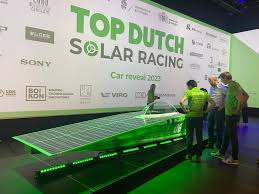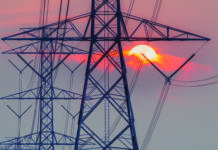Solar electricity innovators Oxford PV are deploying their patented perovskite-on-silicon tandem cells for the first time as an automotive power source, motivating the Top Dutch Solar Racing team in the Bridgestone World Solar Challenge in Australia later this month.
Running across the Great Sunburnt Country for 3,000 kilometres from Darwin to Adelaide starting on 22 October, the competition brings some of the world’s greatest scientific and engineering talent to Australia.
Vehicles can only be powered by the energy of the sun. University-affiliated teams push the limits of technological innovation, crossing the Lucky Country’s Dead Red Centre in solar-powered contraptions which they have designed, engineered and built themselves.
Top Dutch Solar Racing is a multidisciplinary solar racing team based in Groningen. The team stands out as it is not linked to a single technical university; instead its members include students from a variety of institutions and at various educational levels.
Ain’t no Verstappen us now
Four months ago Oxford PV, a 13 year old spin-off from the British university, achieved a world-record efficiency of 28.6% for converting light to power with its commercial-sized tandem solar cell, which features a perovskite coating laid on silicon. That’s around five points better than conventional silicon-only cells.
With an R&D base in Oxford and a factory near Berlin, Oxford PV plan to focus on home roofs and other area-constrained surfaces, when volume sales start early in 2024. The company is clear-eyed about taking its technology beyond 30% efficiency.
Oxford PV and Top Dutch Solar Racing engineers have been working together for months, building and testing the technology that will power the team’s vehicle in their second attempt at the Bridgestone World Solar Challenge. The team narrowly missed out a podium spot in 2019, finishing in fourth place.
Motion without lotion
Video of the launch event of their latest car follows: .
Chris Case, Oxford PV’s co-founder and chief technology officer, said: “Our highly-efficient solar photovoltaic technology integrates with standard silicon solar cells to deliver more power in the same area – critical for enabling more affordable clean energy – as well as now hopefully powering the Top Dutch Solar Racing team across the Outback.
“We will be cheering Green Thunder the whole way.”
For the Dutch racers, photovoltaic engineer Laura de la Fuente Esteban added: “Over the past year our team has been studying how to capture the sun’s energy using innovative technologies that will allow us to compete against teams with over 10 years of experience.
“Tandem silicon solar cells from Oxford PV can outperform traditional silicon solar cells by at least 20%“, she added. “They represent the next big leap forward for solar power, as silicon cells approach their theoretical limits.”
Motion without lotion
Beginning in 1987, the World Solar Challenge occurs once every two years. In 2019, a record 53 entries from 24 countries were received and around 1,500 participants were observed and followed by a global audience of more than 25 million.
The Aussie organisers say the race’s challenge is not just about finishing the fastest, but about innovating towards a future of green mobility.




